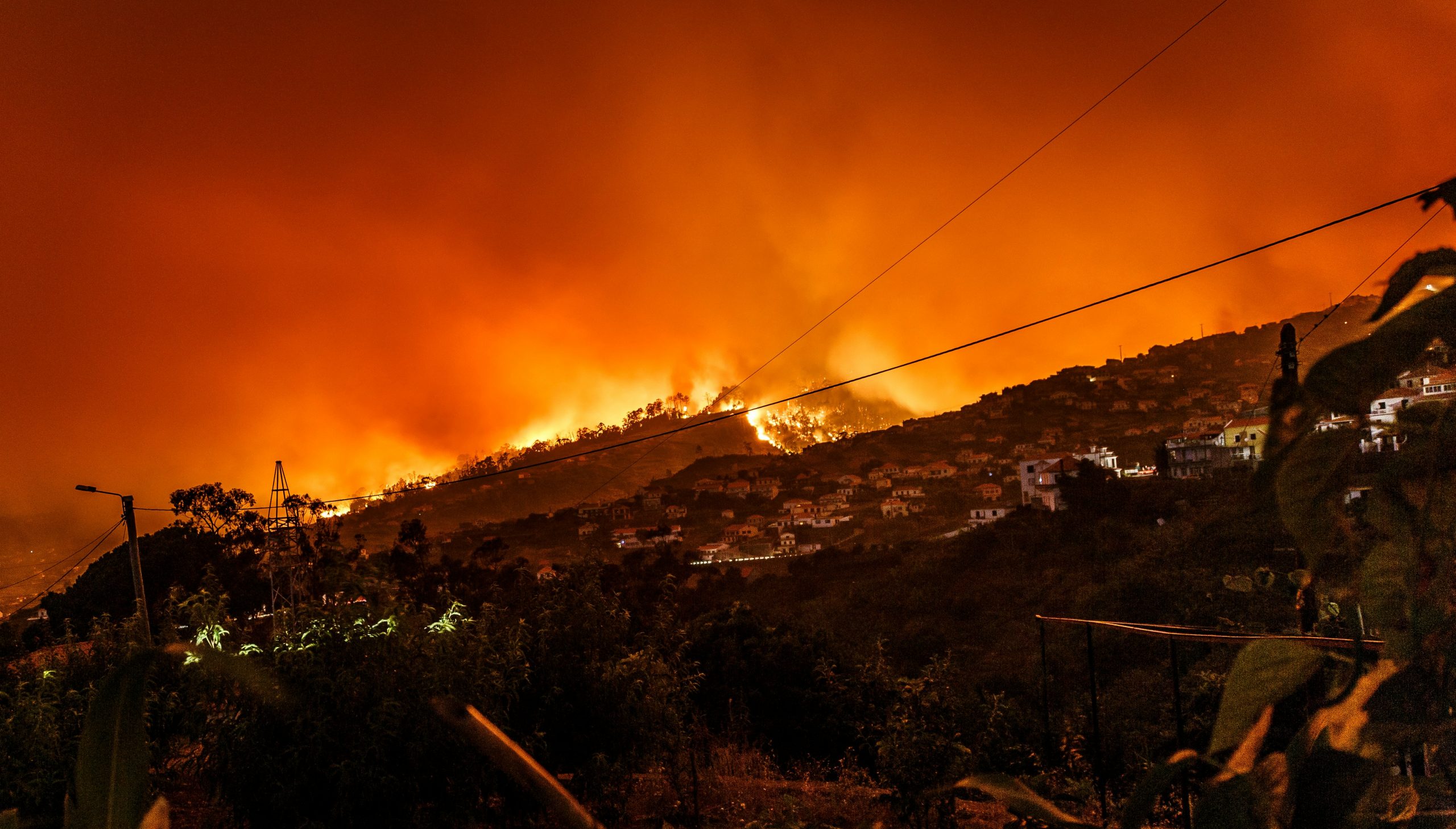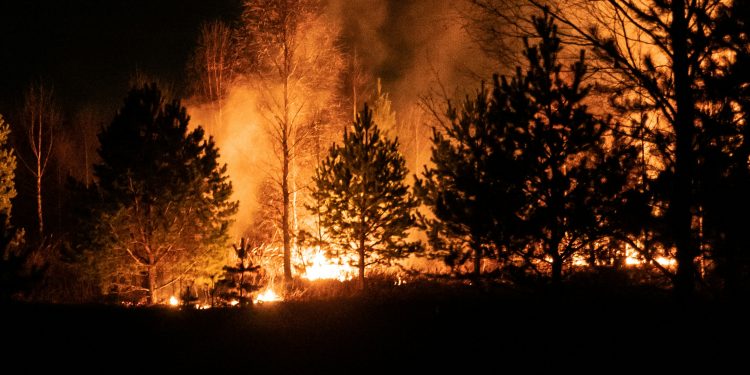Fierce wildfires have engulfed the Aegean island of Chios, with firefighters from Greece and the EU scrambling to contain multiple fronts as record-breaking temperatures exceed 40°C (104°F). The flames, fanned by strong Meltemi winds, have already destroyed olive groves and villages, prompting coastal evacuations by boat. Chios Mayor Fotis Mavromatis declared a state of emergency as the Greek Civil Protection agency warned the situation could worsen with no rain forecast.
So far, the authorities have evacuated 300 residents from Kardamyla and Volissos, while Samos Naval Base dispatched vessels to assist. Popular mastiha-producing villages in southern Chios—home to Greece’s prized gum mastic industry —are under threat. Smoke plumes visible from Turkish coastal cities have raised fears of cross-border spread, though Turkish emergency teams remain on standby. The Hellenic Air Force has deployed water-dropping planes, while EU Civil Protection activated its “escEU fleet to assist.

Climate Scientists Link Fires to “Historic” Heat Dome
The Chios inferno marks Greece’s seventh major wildfire this summer, with meteorologists blaming a stalled heat dome over Southern Europe. NASA FIRMS satellite data shows unprecedented thermal anomalies across the Eastern Aegean, correlating with drought conditions after a rainless winter. “These are climate change fires,” warned Athens University professor Kostas Lagouvardos, noting Chios’ pine forests now burn at intensities previously unseen.
These flames threaten Nea Moni, an 11th-century UNESCO monastery famed for its Byzantine mosaics, where monks are wetting stone walls as a precaution. Local NGOs report endangered Chios sheep and Mediterranean monk seals fleeing toward beaches. With power outages affecting Chios Town, the Hellenic Red Cross has opened emergency shelters at the Chios Port Authority building.

















